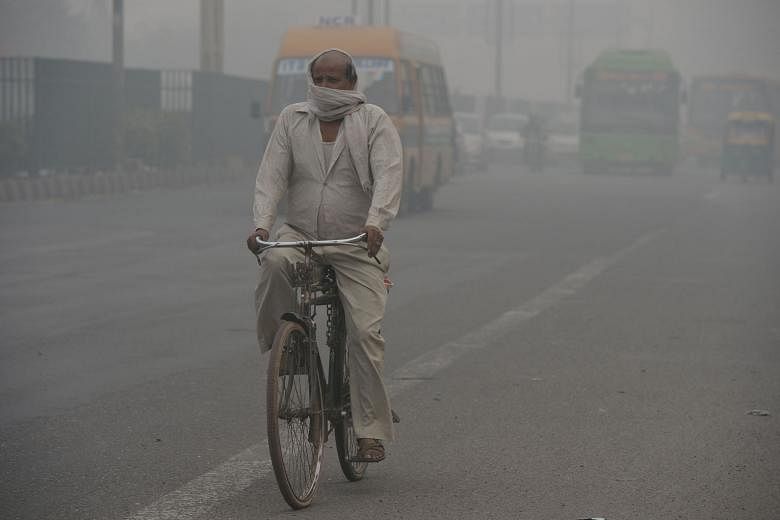NEW DELHI • India may ease a deadline to cut pollution from coal-fired power plants blamed for causing the world's worst air quality amid pressure from power generating firms which say it is too difficult to implement the US$37 billion (S$51.5 billion) reforms.
The deadline to meet all the new standards may be pushed back beyond the original December 2017 target, said Central Electricity Authority chairman S.D. Dubey, who is head of the panel drafting the roadmap for power producers to meet the new guidelines.
Prime Minister Narendra Modi's government proposed the limits on toxic emissions in December 2015.
The delay highlights the challenge facing Mr Modi's administration to provide cleaner air alongside affordable and reliable power to the country's 1.3 billion people.
Limiting emissions would take longer than the government's original two-year deadline and cost as much as 2.5 trillion rupees (S$51.5 billion), the Association of Power Producers, a lobby group of non- state generators, said in March.
The new goals may be implemented "in a phased manner", Mr Dubey said in a phone interview. "Particulate matter emissions should be addressed in the first phase. The next step would be sulphur dioxide emissions and later on oxides of nitrogen. That's the direction we are moving in."
India's 187 gigawatts of coal-fired power capacity - generating more than 75 per cent of the nation's electricity - contribute to the air pollution that makes India home to what the World Health Organisation has determined are 11 of the top 20 cities on the planet with the worst air quality.
The plants account for 61 per cent of its generation capacity, says the Central Electricity Authority.
India must first set up monitoring systems at all plants to establish an emissions baseline, determine what technologies will be appropriate and then install them at the plants, said Ms Lesley Sloss, an analyst with the IEA Clean Coal Centre, a technology cooperation programme of the Paris-based International Energy Agency.
"The time frame for the new norms is extremely challenging and probably not possible in practice," Ms Sloss said.
Coal-fired power plants contribute to the release of about 60 per cent of India's industrial particulate matter, as much as half of the sulphur dioxide and 30 per cent of oxides of nitrogen, the New Delhi-based Centre for Science and Environment said in a report in December, weeks after the new standards were announced.
Meanwhile, a report said that securing the land rights of indigenous people and forest dwellers is crucial to keeping global rises in temperature below the agreed 2 degree Celsius threshold.
Community forest lands from Brazil to Indonesia contain at least 54,546 million metric tons of carbon, equivalent to four times the global carbon emissions in 2014, according to analysis by the Rights and Resources Initiative, Woods Hole Research Centre and World Resources Institute.
BLOOMBERG, REUTERS

